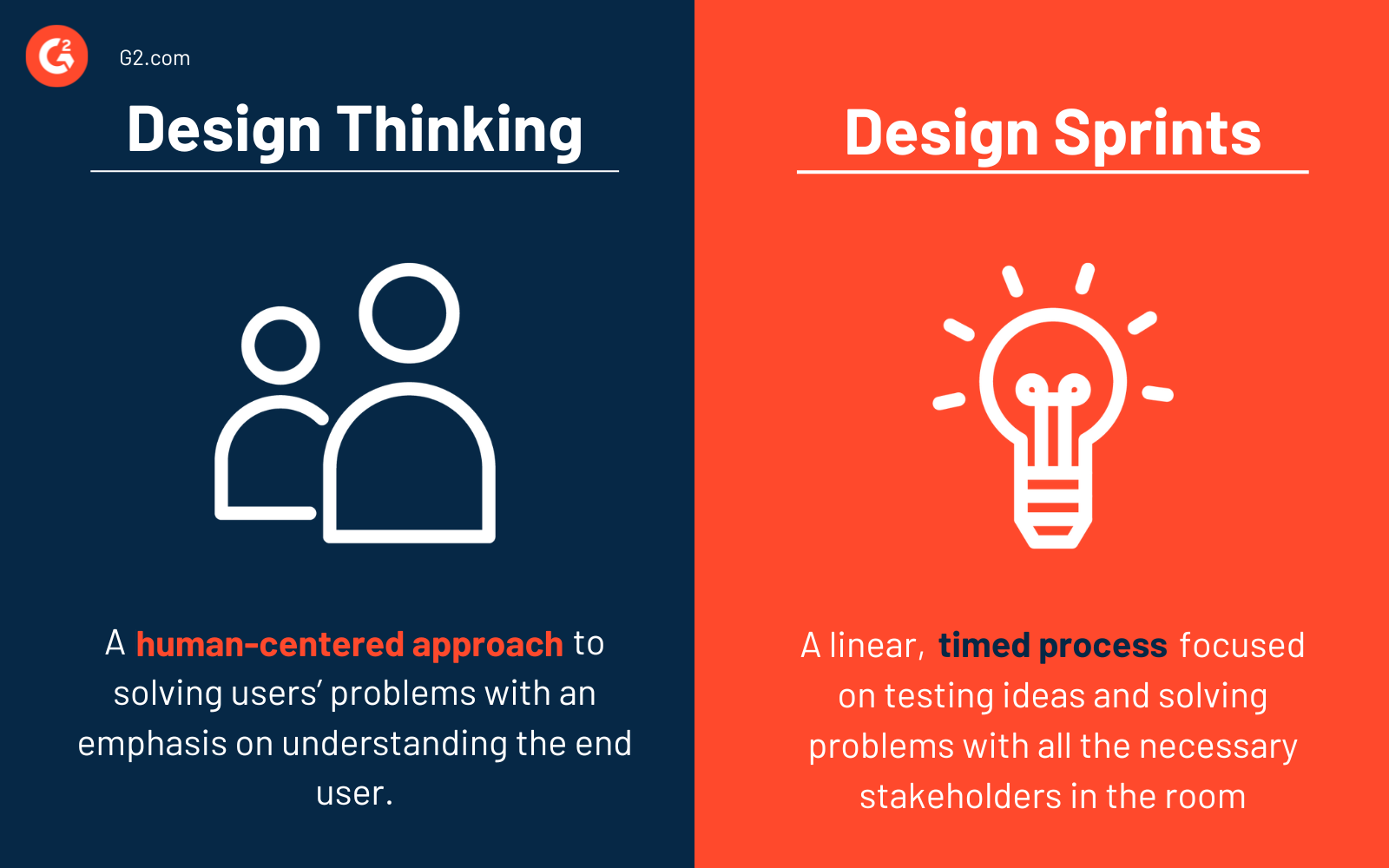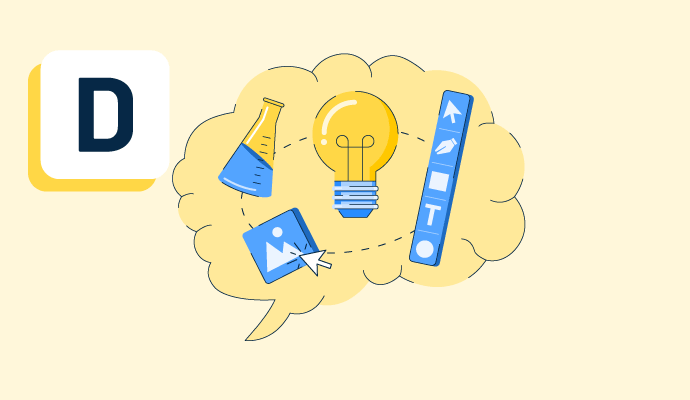What is design thinking?
Design thinking is a human-centered approach to problem-solving that encourages companies to focus on the consumer’s need for a solution. It involves creative techniques to answer end users' questions.
Companies use customer journey mapping software to visualize and understand the customer experience. This software helps marketers understand each step on the customer journey and foster a customer-focused mentality throughout the process.
Stages of design thinking
The design thinking process consists of five iterative and non-linear stages. Teams may not always move through these stages in sequential order.
- Empathize: The first stage involves empathizing with the end user. To fully understand their needs, conducting user research with an open mind and setting aside assumptions and judgments are crucial at this point.
- Define: After understanding the wants and needs of end users, teams should define the problem they’re solving. This stage involves bringing clarity to the issue at hand to later devise creative solutions. A solid problem statement should explicitly outline the problem the team will solve and how the solution will help users.
- Ideate: With the problem statement in mind, the next step is brainstorming ideas and possible solutions. Design thinking promotes creative problem-solving by framing the issue from different lenses. This generates a variety of ideas to choose from.
- Prototype: After narrowing down the list of solutions, teams should experiment with prototypes and new concepts. Prototypes will take on different forms depending on the problem.
- Test: Finally, once the team members develop a prototype, they should test it with a small user group and obtain feedback for areas of improvement. Trying out the prototype allows teams to improve the solution and determine which parts aren’t functional or necessary.
Basic principles of design thinking
The three core design thinking principles, also called the 3 Es, are:
- Empathy: Since design thinking takes a human-centered approach to problem-solving, empathy is at the core of a successful design thinking practice. When businesses approach generating solutions compassionately, they learn from their target users. In turn, companies better understand their prospects and develop more meaningful products that have the potential to lead to better long-term relationships.
- Expansive thinking: Limited thinking lends itself to perfectionism and wasted time trying to develop a perfect solution instead of a plausible one. The design thinking framework challenges these beliefs, welcomes creativity, and encourages teams to approach a problem from every possible angle to discover groundbreaking ideas.
- Experimentation: Since design thinking encourages generating many ideas, the process requires a deeper level of testing and experimentation to discover what solves the target customers’ problems. The prototype and testing stages build experimentation into the process so teams can improve their solutions or discard them entirely to consider a new idea.
Benefits of design thinking
Design thinking provides many advantages to organizations and their employees. Some of the core benefits include:
- More collaboration and creativity. The nature of design thinking pushes teams to think creatively and collaborate in new ways. Generating solutions from different angles requires different thinking. Additionally, practicing design thinking means employees across departments may get involved in conducting user research, brainstorming ideas, and testing prototypes before rolling them out.
- Praising innovation. When researching to understand users’ needs and wants better, businesses will run into new problems without sufficient solutions. Organizations can lean into the design thinking methodology and innovate to solve these problems.
- Encouraging new ways of thinking. Due to its non-linear path, design thinking challenges teams to view issues from multiple points of view, welcoming new ways of thinking. This can lead to unorthodox ideas and non-traditional solutions that disrupt the market.
Design thinking best practices
When implementing design thinking for the first time, teams can keep the following best practices in mind to ensure the highest likelihood of success.
- Foster an environment that welcomes new ideas. Design thinking involves collaboration, new ideas, and a willingness to experiment. These things require a safe and comfortable environment. Businesses must prioritize creating judgment-free, inclusive spaces, so team members feel comfortable participating throughout the process.
- Test different tools to find what works best. Certain tools, such as note-taking and brainstorming software, can facilitate the design thinking process. Teams should test various options available to identify which works best for their team or the problem at hand. Preferences may vary depending on the kind of work.
- Conduct retrospectives to improve the design thinking process. Teams can use the design thinking process as a learning opportunity at every stage. A retrospective process gathers feedback about what went well and what didn’t before solving the next problem. This helps ensure businesses customize design thinking methodologies, so they work for their team members and audience.
Design thinking vs. design sprints
Business professionals sometimes compare design thinking to design sprints, but some key differences are worth noting.

Design thinking is a non-linear, human-centered approach to solving users’ problems. It has no set time constraints, but rather more of an emphasis on fully understanding the end user. On the other hand, a design sprint is a quick, linear, timed process focused on testing ideas and solving problems with all the necessary stakeholders in the room.
Learn more about how design thinking helps businesses create a great user experience (UX).

Alyssa Towns
Alyssa Towns works in communications and change management and is a freelance writer for G2. She mainly writes SaaS, productivity, and career-adjacent content. In her spare time, Alyssa is either enjoying a new restaurant with her husband, playing with her Bengal cats Yeti and Yowie, adventuring outdoors, or reading a book from her TBR list.

